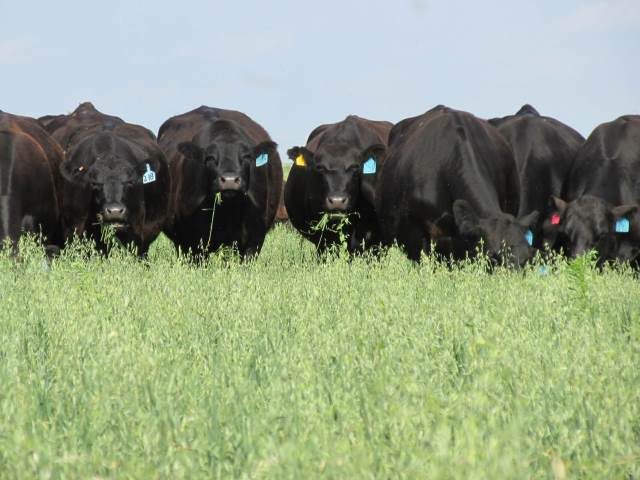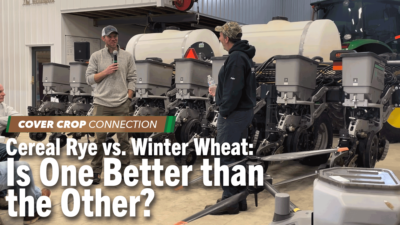Freezing temperatures are on their way for most of Nebraska. These freezing temperatures will play a key role in determining what can be grazed or hayed safely for your livestock.
With many of Nebraska’s acres in cover crop mixtures due to prevented planting, taking a quick check before grazing or using them is key. These mixes may be unfamiliar or new to your system and could be hazardous if fed incorrectly.
Freezing temperatures cause metabolic and cellular changes to our forage crops. Prussic acid formation and nitrate poisoning are the biggest concerns.
Sorghum, sudangrass, sorghum-sudangrass hybrids, and milo following a frost have broken cell membranes that allow the formation of prussic acid.
Prussic acid is a form of cyanide that can quickly cause lethal results when consumed in high amounts. Monogastric species like pigs and horses can get prussic acid poisoning in extreme cases, but ruminants are more susceptible.
Keeping livestock out of these areas for five to seven days after a frost can limit the risk associated with prussic acid. Each time a new part of the plant is frozen, this five-seven day timer is reset.
New shoots and especially regrowth on previously frost-damaged plants have the highest concentrations of prussic acid.
If you notice new shoots after a frost, animals should not be allowed to graze until the regrowth is 15-18 inches tall or a frost completely kills the plant.
With warmer temperatures set to follow the cold this weekend, keeping an eye out for these new shoots is going to be particularly important this fall.
Unless extremely high levels of prussic acid are present initially, haying or cutting a crop with prussic acid is not a concern. During the drying process, the prussic acid will volatilize and 50% or more of the initial concentration will be lost.
If you are concerned about high levels of prussic acid in a silage or hay feed, samples can be sent to a lab for analysis. Grasses are especially susceptible to nitrate poisoning risks. Slower metabolism following a stress like freezing allows nitrates to accumulate within the plant, specifically oats, sudangrass and millets. Haying or green chopping is not recommended following a freeze and can be potentially dangerous.
Nitrates commonly concentrate in the lower portions of plant stems. Waiting five days before haying or chopping and keeping a cutting height of six to eight inches will help mitigate risk. If grazing, reducing the stocking rate and increasing the animals’ ability to selectively graze can lower nitrate risks.
This is not a good strategy for mixtures with sorghum species due to the prussic acid concerns discussed above.
One final issue to keep an eye out for following a freeze is bloat.
In high-quality forages like alfalfa, clover and fresh small grain shoots, frost damage in the plant will rupture cell walls and make protein and minerals more readily available for one to two days. These readily available proteins and minerals increase gas buildup in the rumen to the point animals cannot eliminate them by eructation (belching), creating bloat.
Fresh young plants and naturally higher protein species like legumes have a higher chance of causing bloat.
In cover crop mixtures, grazing mature plants and making sure that mixtures don’t contain more than 50% high forage quality species like clover and alfalfa will help lower this risk.
Providing free-choice grass hay and limiting animal grazing by strip grazing can help provide a more balanced mixture of plants and decrease the likelihood of bloat even further.
The bottom line is to be patient when utilizing these forages.





Post a comment
Report Abusive Comment